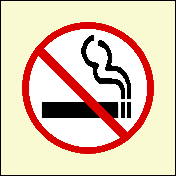



There are a lot of so called ‘facts’ buzzing around in the popular dialogue that have their basis in documents. These documents are often physically and stylistically difficult to access and fathom, so that many popular notions are accepted without substantiation.
One such 'fact' is the notion that the use of tobacco products inflicts a major financial burden on society in health and productivity costs. This seems to be a 'simple truth', but examination of the source documents reveals that it is neither simple nor true.
When I first wrote this article (2015), the main documents (for Australia) were:
These documents are complex and heavy with statistical jargon—not accessible to the average reader.
Some of their basic parameters are:


This is not a clear-cut issue. If you look at the figures and the factors included in the research documents, taxes on tobacco products present a huge income stream for federal and state governments. The grim picture of the costs of smoking tobacco, painted by government funded researchers, seems to create a ‘duty of care’ obligation on government to tax tobacco products heavily!
Jump forward 5 years to 2020 and The Australian Institute for Health and Welfare, states on its website*3*:
"The total net cost of smoking in Australia in 2015–16 has been estimated at $136.9 billion, comprising $19.2 billion in tangible costs and $117.7 billion in intangible costs. The largest of these tangible costs was spending on tobacco by dependent smokers ($5.5 billion), followed by workplace costs ($5.0 billion) and the reduction in economic output due to premature mortality ($3.4 billion). Intangible costs were estimated using the value of life lost and pain and suffering caused by smoking-attributable ill health ($25.6 billion), and premature mortality ($92.1 billion) (Whetton et al. 2019)"*4*.
These figures come from the study, Wheton et. al of Curtin University, financed by the federal government. In it they accept all the findings of Collins and Lapsley, 2008, and add:
There seems to be no limit to the exuberance with which government funded studies will dish out exaggerated figures that seem to endorse the continual increase in taxation on tobacco products. And under the radiance of this saintly glow, our governments, federal and state are reaping a rich harvest in tax income.
An interesting perspective is provided by a 1997 study published in the New England Journal of Medicine*8*, which does factor in savings through the early death of smokers. It concludes:
"If people stopped smoking, there would be a savings in health care costs, but only in the short term. Eventually, smoking cessation would lead to increased health care costs."
This study doesn't seem to have been considered by the Australian government in formulating its tobacco tax policy.
The complexity of these documents/studies are such, that no average person can access the data they present, let alone make the observations I have made here.
* * *
Note 1: An initiative of the Cancer Council of Victoria and the Heart Foundation has a more approachable and less statistically challenged presentation but it is still immensely complex.*5*
Note 2: The National Drug research Institute at Curtin University seems to be the current standard bearer and they acknowledge they are federal government funded.*4*
* * * * *
—— INFORMATION BECOMES 'LOST' IN DOCUMENTS. ——
Back to 'Articles - Documents' page
1. Begg S, Vos T, Barker B, Stevenson C, Stanley L and Lopez A. 2007, The burden of disease and injury in Australia 2003, PHE 82. Canberra: AIHW
2. Collins D and Lapsley H. 2008, The costs of tobacco, alcohol and illicit drug abuse to Australian society in 2004/5, P3-2625. Canberra: Department of Health and Ageing.
3. AIHW, Australian Institute of Health and Welfare, discussion of tobacco and impacts on Australian physical health and economy.
4. Whetton S, Tait R, Scollo M, Banks E, Chapman J, Dey T et al. 2019. Identifying the social costs of tobacco use to Australia in 2015/16. Perth: National Drug Research Institute, Curtin University.
5. Tobacco in Australia, an initiative of the Cancer Council of Victoria and the Heart Foundation, has a more approachable and less statistically challenged presentation but is still immensely complex.
7. Home Care Packages (HCP) are an Australian government program that enables older Australians to access affordable care services in their own home rather than being obliged to enter a residential care facility.
8. The New England Journal of Medicine The Healthcare Costs of Smoking